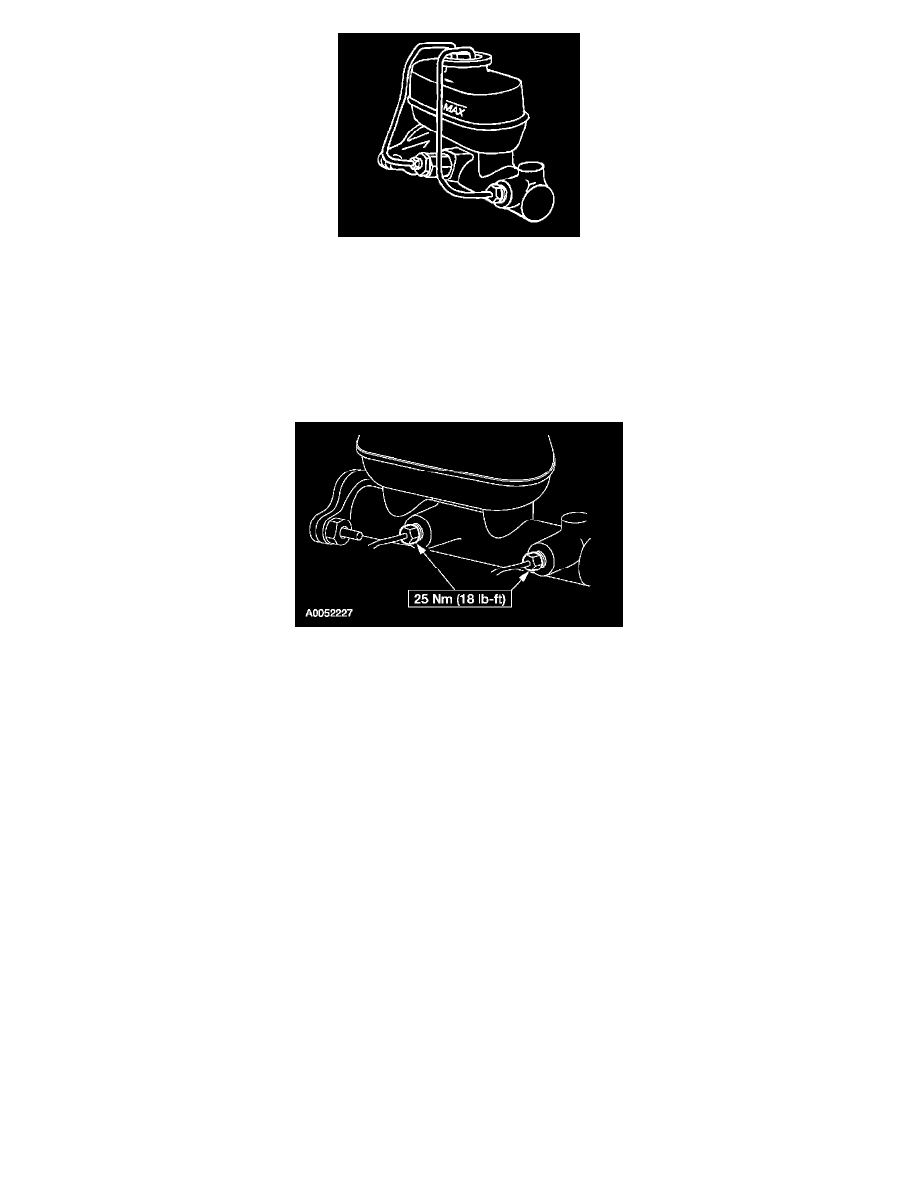Expedition 4WD V8-5.4L SOHC VIN 5 (2005)

2. Install short brake tubes with ends submerged in the brake master cylinder reservoir and fill the brake master cylinder reservoir with brake fluid.
3. Have an assistant pump the brake pedal until clear fluid flows from both brake tubes without air bubbles.
4. Remove the short brake tubes and install the brake outlet tubes.
5. Bleed each brake tube at the brake master cylinder as follows:
1. Have an assistant pump the brake pedal and then hold firm pressure on the brake pedal.
2. Loosen the Rear-most brake tube fittings until a stream of brake fluid comes out. Have an assistant maintain pressure on the brake pedal while
tightening the brake tube fitting.
3. Repeat this operation until clear, bubble-free fluid comes out.
4. Refill the brake master cylinder reservoir as necessary. Repeat the bleeding operation at the front brake tube.
6. While the assistant maintains pressure on the brake pedal, tighten the brake tubes.
Four Wheel Anti-Lock Brake System (4WABS)
WARNING: Brake fluid contains polyglycol ethers and polyglycols. Avoid contact with eyes. Wash hands thoroughly after handling. If
brake fluid contacts eyes, flush eyes with running water for 15 minutes. Get medical attention if irritation persists. If taken internally, drink
water and induce vomiting. Get medical attention immediately. Failure to follow these instructions may result in personal injury.
CAUTION: Do not allow the brake master cylinder reservoir to run dry during the bleeding operation. Keep the brake master cylinder reservoir filled
with the specified brake fluid. Never reuse the brake fluid that has been drained from the hydraulic system.
CAUTION: Brake fluid is harmful to painted and plastic surfaces. If brake fluid is spilled onto a painted or plastic surface, immediately wash it with
water.
NOTE: When any part of the hydraulic system has been disconnected for repair or new installation, air may get into the system and cause spongy
brake pedal action. This requires bleeding of the hydraulic system after it has been correctly connected. The hydraulic system can be bled manually or
with pressure bleeding equipment.
NOTE: This procedure must be performed if the 4 wheel anti-lock brake (4WABS) hydraulic control unit (HCU) has been installed new.
NOTE: One conventional pressure bleed cycle consists of advancing the brake pedal to its depressed position, opening the disc brake caliper bleeder
screw, allowing fluid to be released into the waste container, closing the disc brake caliper bleeder screw and releasing the brake pedal.
NOTE: Performing the diagnostic program routine drives entrapped air from the otherwise inaccessible lower section of the 4WABS valve into the
upper sections (accessible by bleeding the brakes). Subsequent bleedings remove the air from the system.
NOTE: Add recommended brake fluid as necessary throughout the procedure.
